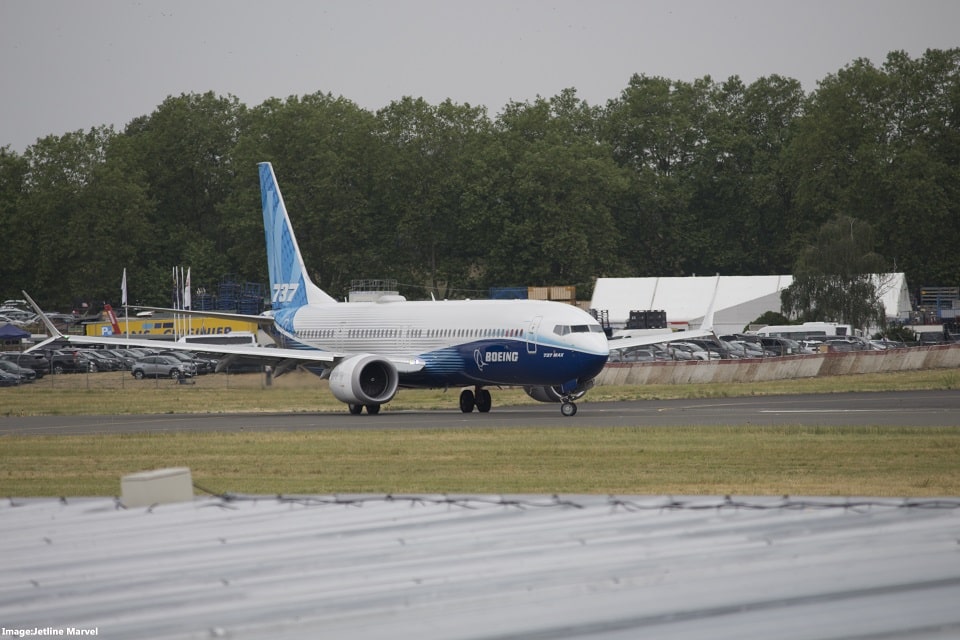Aerospace
Boeing is pushing Air India to purchase the 737 MAX, which was built for a Chinese carrier.
#Boeing is said to have offered some #737MAX aircraft to Air India.

While it waits for China to decide on the orders, Boeing is said to have offered some 737 MAX aircraft to Air India. Bloomberg reports that Boeing is negotiating the sale of some of the 140 MAX jets that were initially built for Chinese carriers with lessors and airlines.
[adinserter block="3"]
Additionally, a cold war is breaking out in China, which has stopped delivering Boeing 737 Max planes to its domestic airlines. As a result, those planes are now merely sitting in parking lots. Boeing has painted the aeroplane the colour White so that whoever purchases it can apply the livery.
10 things about Boeing 737 max aircraft.(Opens in a new browser tab)
Boeing is pressed for time and wants to sell these planes as soon as feasible. The majority of aeroplanes resume routine maintenance the longer they are parked. According to the Bloomberg article, there is a rumour that Boeing is in talks with Air India to purchase those unused planes that were made for China Airlines.
[adinserter block="3"]
Boeing received the most orders at the Farnborough airshows in 2022.(Opens in a new browser tab)
America maintained its tough sanctions against Russia following the Russian invasion of Ukraine. However, as a result of Chinese cooperation, Russia resumed its western aircraft flights. and America has withdrawn from some of China’s programs. presently, the Boeing 737 Max is erupting holding. Several political decisions impacted Boeing’s market dominance in China.
[adinserter block="3"]
Malaysia regains US FAA’s Category 1 safety rating(Opens in a new browser tab)
Air India is likewise looking to expand its fleet and has its sights set on more Boeing and Airbus aircraft. Boeing is now negotiating the purchase of those aircraft with the lessor and Air India. Regarding the rumours about underutilised Boeing 737 Max planes, Boeing has yet to confirm them.

Aerospace
Boeing Transfers Rocket Stage to NASA, Paving Way for Human Moon Mission

Boeing has achieved a significant milestone by providing NASA with the second core stage of the Space Launch System (SLS) rocket.
This crucial component, crafted at NASA’s Michoud Assembly Facility (MAF), is set to propel the Artemis II crew into lunar orbit, marking humanity’s return to deep space after a 50-year hiatus.
The monumental Boeing-built rocket stage, the largest element of the Artemis II mission, will embark on a journey aboard the Pegasus barge, traveling 900 miles to NASA’s Kennedy Space Center.
Comparison of two legendary aircraft B777x vs B747 aircraft:Click here
Upon arrival, it will be meticulously integrated with other essential Artemis II components, including the upper stage, solid rocket boosters, and NASA’s Orion spacecraft within the iconic Vehicle Assembly Building. This intricate integration process is a vital step toward the eagerly anticipated Artemis II launch, slated for 2025.
“Boeing-built products helped land humankind on the moon in 1969, and we’re proud to continue that legacy through the Artemis generation,” remarked Dave Dutcher, vice president and program manager for Boeing’s SLS program. “Together, with NASA and our industry partners and suppliers, we are building the world’s most capable rocket and paving the way to deep space through America’s rocket factory in New Orleans.”
NASA, Lockheed Martin Reveal X-59 Quiet Supersonic Aircraft:Click here
The delivery of Core Stage 2 marks a significant achievement in the evolution of the SLS rocket. Towering over 200 feet and powered by four RS-25 engines, this core stage, coupled with two solid-fueled booster rockets, will generate a staggering 8.8 million pounds of thrust. This immense power is crucial to launching Artemis II and future missions into the vast expanse of space.
The SLS rocket stands unparalleled in its capability to transport both crew and substantial cargo to the moon and beyond in a single launch. Its extraordinary capacity will facilitate the delivery of human-rated spacecraft, habitats, and scientific missions to destinations including the moon and Mars, ushering in a new era of space exploration.
-

 Travel1 week ago
Travel1 week agoAir India to Expand US Operations with Three New Routes After a Decade
-

 Travel2 weeks ago
Travel2 weeks agoWhy We Should Avoid These Stamps in a Passport
-

 Airlines1 month ago
Airlines1 month agoInvestigations Reveal Fake Chinese Titanium in Boeing and Airbus Jets
-

 Tech4 weeks ago
Tech4 weeks agoChina’s CATL Plans 1,800-Mile Electric Plane Launch by 2027
-

 Airport3 days ago
Airport3 days agoTop 10 Largest Airports in the World by Size
-

 Aerospace4 weeks ago
Aerospace4 weeks agoChina’s Fighter Jets Turn Wings into Autonomous Drones
-

 Airlines4 days ago
Airlines4 days agoAir India Rolls Out A350s for Delhi-New York JFK and Newark Routes
-

 Defence3 weeks ago
Defence3 weeks agoBoeing Enhances Chinook with New Engines and Block II Upgrades at $96 Million







